
Data Center Electrical Requirements – Specialized Knowledge For A Growing Market
Running a data center means handling big power needs, and that’s no small task.
Each year, electricity demand grows as cloud computing and AI shape how we use technology.
This guide will cover key electrical requirements to help you stay ahead in this fast-moving industry.
Key Takeaways
- Data centers need high power reliability, using systems like N+1 redundancy and UPS to prevent downtime. Backup generators and energy storage ensure smooth operations during outages.
- Growing AI and cloud computing drive higher electricity needs, requiring scalable solutions for sudden spikes in energy use. Efficient cooling methods like liquid cooling improve energy savings.
- Renewable energy sources, such as solar, wind, and SMRs (Small Modular Reactors), offer sustainable power options. These reduce grid dependency but require backup systems for consistency.
- Talent shortages in electrical engineering pose challenges as data centers grow. Specialized training programs can bridge the gap for skills in AC/DC systems, smart grids, and renewable integration.
- Supply chain issues cause delays in key equipment like transformers or PDUs. Planning ahead with alternative suppliers helps avoid project disruptions amidst growing global demand.
Escalating Demand for Data Centers
Data centers are sprouting like mushrooms after rain, driven by fast-growing tech needs. The thirst for more power is turning data storage into a booming industry.
Growth in AI-driven infrastructure

AI infrastructure is growing fast, changing electrical demands.
AI needs massive computing power, which means higher energy consumption in data centers.
Training models like those used for generative AI requires huge amounts of electricity.
This pushes the limits of traditional systems.
You must account for sudden spikes in energy use caused by AI applications.
Power supplies need to handle these loads without fail. To stay ahead, consider scalable solutions and build redundancy into your designs.
As one contractor said:.
Without reliable power, even the smartest system goes dark.
Surge in cloud computing and storage needs
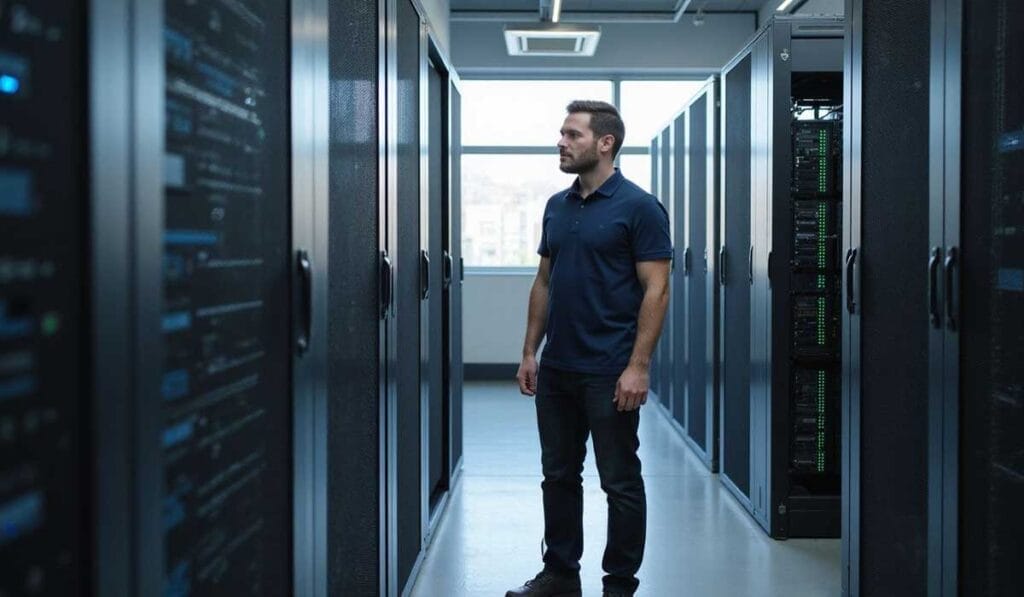
Cloud services are booming, and data centers have to keep up.
Businesses now rely on storing massive amounts of data online, demanding more power-hungry hardware.
This growth increases electricity demand across facilities worldwide.
Higher storage means higher energy consumption.
You need to plan for reliable power supply systems like uninterruptible power supplies, efficient cooling methods, and backup generators.
Without these, outages could cripple operations in seconds.
Stay ahead by designing infrastructure that meets cloud providers’ rapid expansion needs while being mindful of energy efficiency goals.
Unique Electrical Requirements of Data Centers
Data centers demand serious power, far beyond most facilities. They need systems that promise constant stability, no matter the pressure.
High power density per rack

High power density per rack means fitting more computing in smaller spaces.
Each rack can draw 10 to 30 kilowatts or even higher, depending on its design. This pushes the need for better cooling systems and efficient energy use.
You must plan wiring carefully to handle such loads without overheating.
*A well-designed rack is like a race car—compact, powerful, but demanding precision,* said a veteran electrical engineer.
Three-phase power helps manage high demands efficiently.
Proper distribution units (PDUs) ensure smooth delivery without disruptions. Failing to size circuits correctly risks outages or worse—equipment damage!
Redundancy and reliability needs
Data centers need backup systems to keep running smoothly during power failures.
N+1 redundancy is common, meaning there’s always one more component than needed, like an extra uninterruptible power supply (UPS) or generator.
This keeps things online if something breaks.
You must also focus on consistent power delivery.
Use both alternating current (AC) and direct current (DC) setups for flexibility.
Backup generators, energy storage solutions, and reliable grid access help meet these demands while reducing downtime risks.
Reliability isn’t just a choice; it’s critical for managing sensitive data and services without interruptions.
Power Sources for Data Centers
Data centers crave steady, reliable power like a car craves fuel.
From greener options to high-tech solutions, the way they get this energy is changing fast.
Renewable energy integration
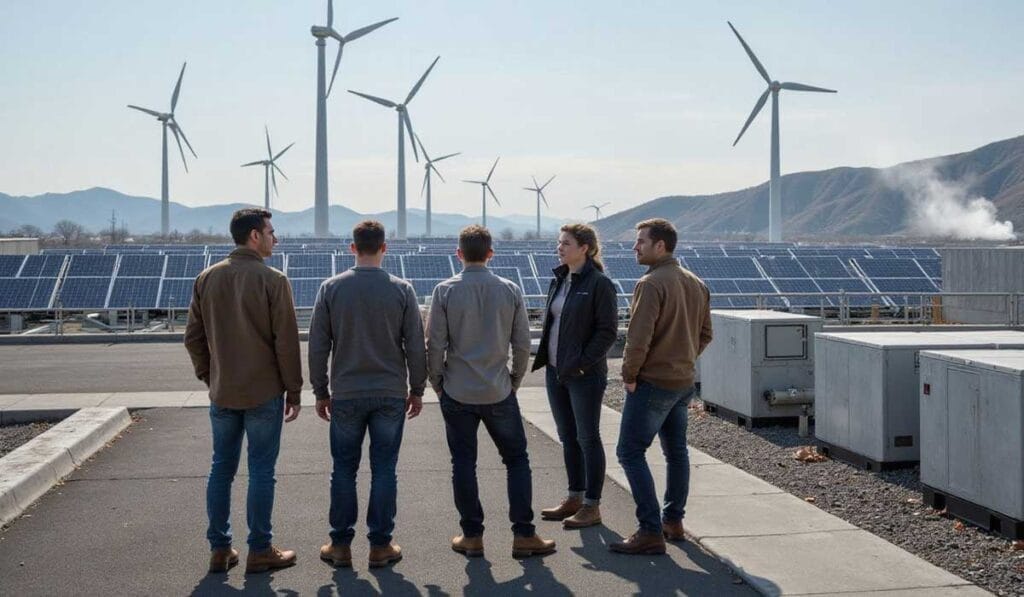
Renewable energy is reshaping how you power data centers.
Solar panels and wind turbines can reduce reliance on traditional grid electricity, cutting costs and carbon emissions.
Geothermal energy also offers consistent, clean power for facilities in suitable areas.
Such sources help meet growing demand while aligning with environmental goals.
You face challenges like inconsistent supply from renewables during cloudy or calm days.
Pairing these systems with backup generators or advanced battery storage ensures smooth operations when natural conditions fluctuate.
Virtual power plants may also help balance your facility’s energy load by blending multiple resources efficiently.
Opportunities for nuclear energy adoption
Small modular reactors (SMRs) offer steady and carbon-free energy for data centers.
These nuclear systems take up less space, making them fit well with growing data demands.
Unlike solar or wind, SMRs run day and night, solving challenges tied to cloud computing’s constant power needs.
Grid dependency can strain operations during peak usage or outages.
Nuclear power plants reduce this risk by providing a reliable alternative.
Long-term energy use becomes easier to predict with nuclear sources too, thanks to stable costs compared to natural gas or coal power.
Grid dependency and challenges
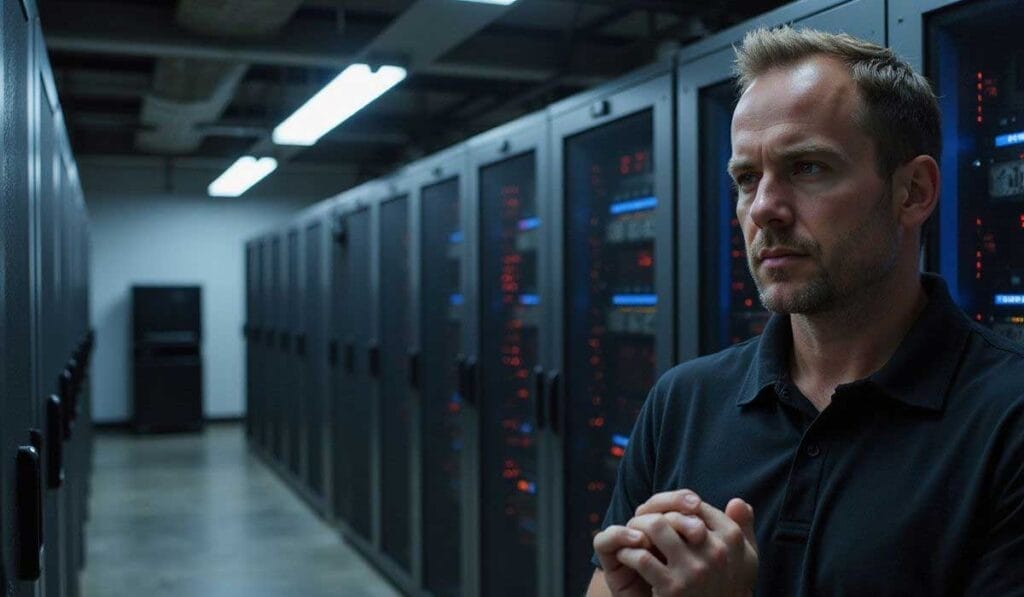
Data centers rely heavily on electrical grids, but this dependence creates risks.
Power outages or grid instability can disrupt operations and lead to downtime.
Utility companies may struggle to meet the rising electricity demand from hyperscale data centers, especially during peak usage periods.
You face added challenges as grids transition to renewable energy sources like wind and solar.
These clean energy options aren’t always consistent since weather impacts their output.
Backup generators and uninterruptible power supply (UPS) systems become critical for keeping operations running smoothly in these moments of unpredictability.
Power Distribution Systems in Data Centers
Power distribution in data centers must handle high loads while staying reliable.
You need systems that keep everything running, even when the grid stumbles.
Uninterruptible Power Supply (UPS) systems
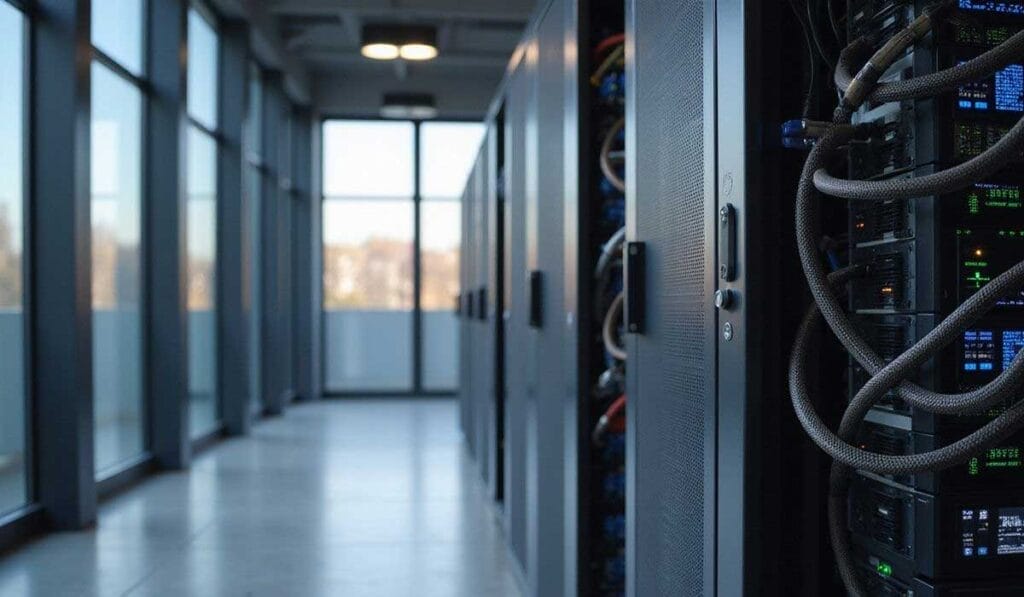
UPS systems keep data centers running during power outages.
These systems act as a bridge, providing temporary power until backup generators start.
They prevent downtime that could disrupt cloud service providers or database management operations.
Most UPS setups use batteries, but some rely on flywheels or other energy storage solutions.
You need to consider capacity, runtime, and efficiency when choosing a system.
N+1 redundancy is also key for reliability, ensuring no single point of failure impacts your operations.
Backup generators and energy storage
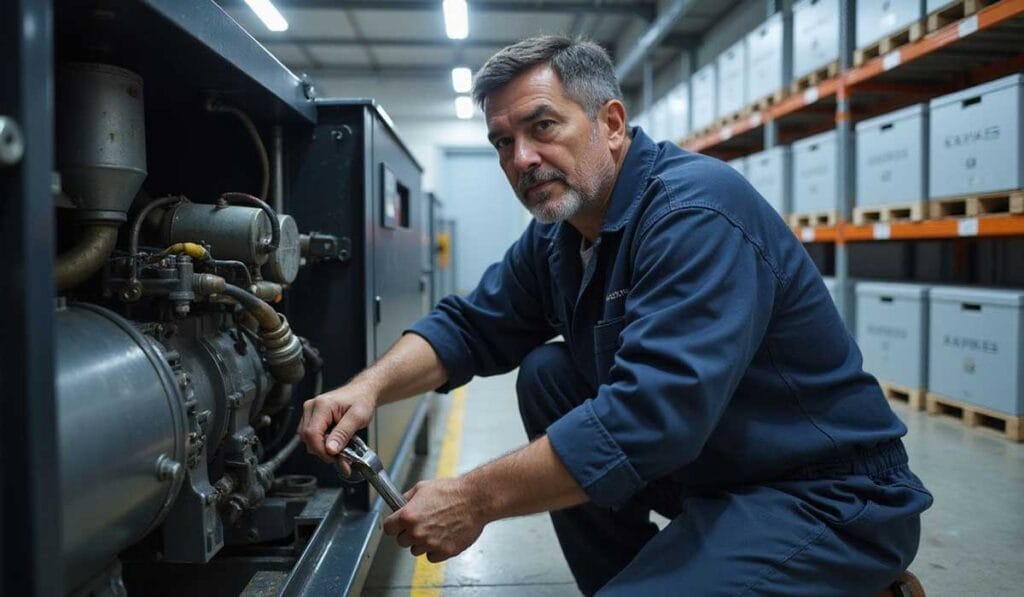
Backup generators step in during outages, keeping systems running without a hitch.
They use diesel or natural gas and provide instant power to avoid downtime.
For larger data centers, multiple generators are often installed with N+1 redundancy to boost reliability.
Regular maintenance is needed so they perform well under pressure.
Energy storage adds an extra layer of protection.
Batteries, like lithium-ion types, store electricity for quick delivery when the grid fails.
These systems can also smooth power flow and reduce strain on equipment by handling minor disruptions from the main supply.
Combined with renewable energy sources, they cut costs and carbon footprints while maintaining performance standards.
Power distribution units (PDUs)
PDUs manage electricity flow to servers and equipment in the data center.
These units distribute power from a primary source to multiple devices, keeping operations smooth.
You can choose between basic PDUs or advanced ones with monitoring features.
Smart PDUs even track power consumption in real-time.
Having the right PDU ensures safe energy use at your site.
They help prevent overloads and downtime by balancing electricity across devices.
Energy Efficiency in Data Centers

Cutting-edge cooling and smarter power tools can slash energy waste, save money, and keep data humming—read on to learn how.
Cooling innovations to reduce power usage
High energy demand from cooling systems hurts power efficiency.
New methods like liquid cooling can cut electricity use by a wide margin.
Instead of blowing air, these systems use chilled liquids to cool servers directly.
It reduces wasted energy and works better in tight spaces.
Hot aisle containment is another game-changer for data centers.
This method traps hot air away from cold zones, keeping temperatures steady without overworking the system.
Pair this with advanced monitoring tools to track heat levels in real time, and you’ll save even more on energy bills.
Advanced monitoring and optimization tools
Cooling systems can only reduce so much power usage without help.
You need tools to monitor and fine-tune energy use across your data center.
These tools track electricity demand, power consumption, and temperature changes in real time.
Energy monitoring software flags wasteful patterns fast.
Optimization programs adjust loads or shift resources automatically, keeping operations efficient.
Power distribution units (PDUs) equipped with sensors provide precise data on rack-level energy use.
This keeps costs down while increasing reliability for cloud service providers or hyperscale centers like those in Northern Virginia.
Adoption of smart grid technologies
Smart grid technologies help you manage electricity demand with precision.
These systems improve energy distribution, reducing waste and cutting costs.
They also enable real-time monitoring of power flow, ensuring stability in data center operations.
By embracing smart grids, you can integrate renewable energy sources like wind or solar seamlessly.
This reduces dependency on traditional grid power and lowers carbon emissions.
With these tools, handling peak loads becomes simpler while boosting efficiency across your facilities.
Electrical Infrastructure Trends
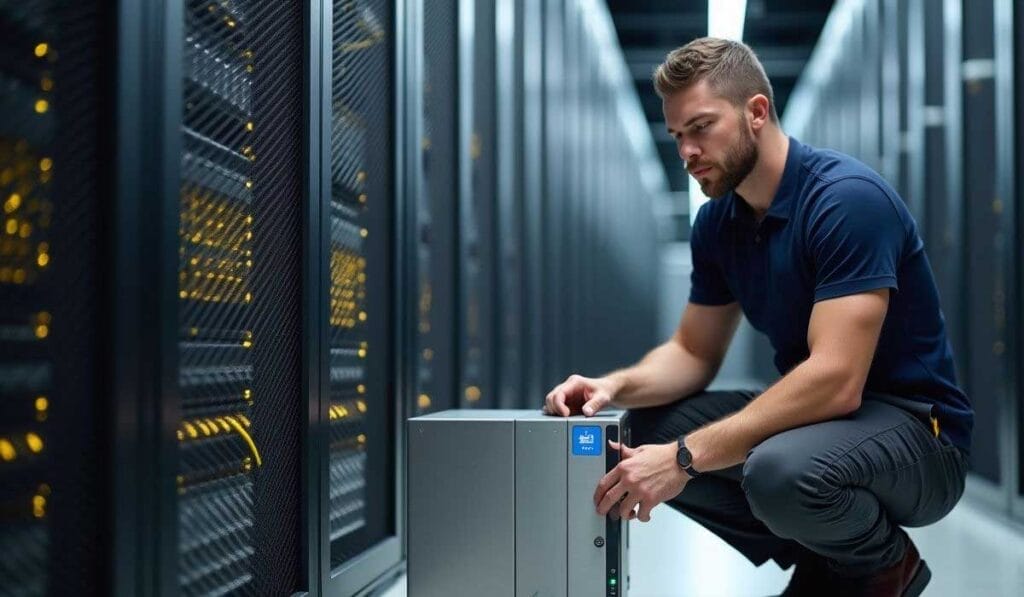
Data centers are switching to smarter, smaller power setups to handle growing energy loads.
Localized grids are stepping in, giving sites more control over their electricity use.
Modular power systems
You need flexible solutions to meet growing energy demands.
Modular power systems offer a smart, scalable option. With these systems, you can add or adjust capacity based on changing needs, avoiding unnecessary waste.
They reduce setup time and simplify maintenance with pre-assembled components.
These systems also improve reliability in hyperscale data centers.
If one module fails, others keep your operations running smoothly.
Pair modular setups with renewable energy sources or backup generators for better efficiency and lower carbon impact.
You get more control over power consumption without compromising uptime or performance quality.
Microgrid solutions for localized power
Microgrids offer a smart way to power your data center while reducing grid dependency.
They combine renewable energy, like solar or wind, with backup generators and battery storage.
This keeps electricity flowing even during outages.
You can also control where the power goes, cutting waste and improving efficiency.
These systems work well for hyperscale data centers in areas with shaky grid reliability.
By using microgrids, you can lower operating costs and meet regulatory requirements for clean energy use.
Plus, integrating geothermal energy or small modular reactors (SMRs) boosts sustainability.
Talent and Skills in Data Center Electrical Design
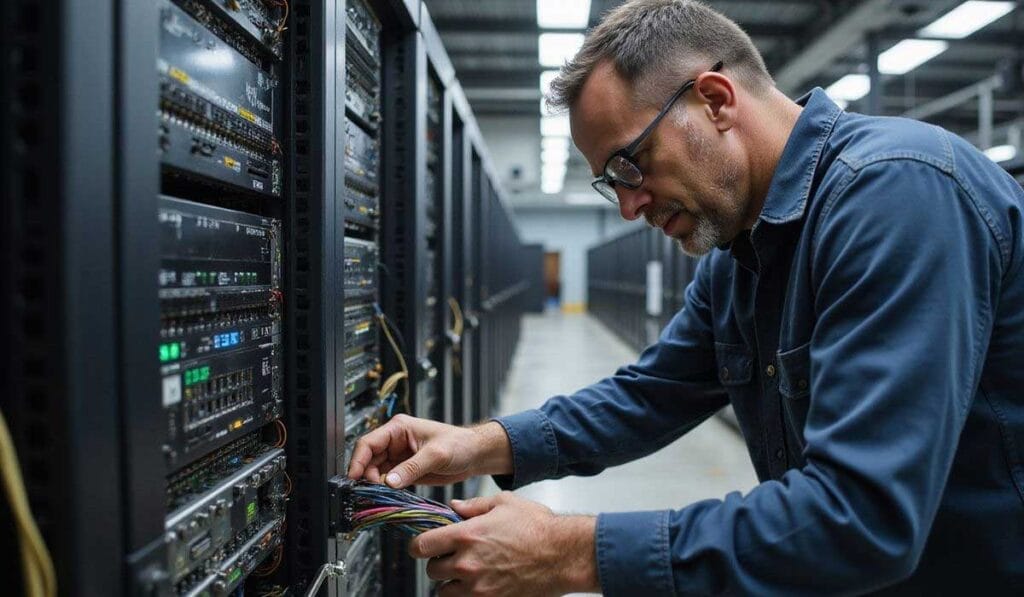
Skilled electricians are the backbone of data center projects, handling everything from wiring to backup systems.
As these facilities grow, so does the need for specialized experts who can tackle complex power setups.
Demand for specialized electrical engineers
Data centers need electrical engineers with specialized skills.
You manage power-hungry systems that rely on high power density and redundancy like N+1 setups.
Engineers in this area must handle critical tools, such as uninterruptible power supply (UPS) systems, backup generators, and advanced cooling technology.
The rise of artificial intelligence (AI), cloud migration, and hyperscale data centers makes finding skilled talent even harder.
You face challenges in hiring due to a growing gap in workforce development for energy infrastructure projects.
Expertise in alternating current (AC), direct current (DC), and renewable energy integration is now more valuable than ever.
Closing the talent gap in the industry
Skilled electrical engineers are in short supply.
Data center growth needs workers who understand three-phase power, UPS systems, and energy efficiency strategies.
Cloud migration and AI-driven infrastructure push the demand higher.
This creates opportunities for specialized training programs aimed at preparing people like you to meet these challenges.
You can lead efforts to train apprentices or upskill current employees.
Partner with trade schools or use industry certifications to fill technical roles quickly.
Focus on renewable energy integration, smart grid technologies, and designing systems with N+1 redundancy in mind.
These skills keep your projects running smoothly and attract top clients needing high-tech solutions.
Opportunities for Investors

Big data growth means bigger power needs, which spells opportunity.
Hyperscale facilities and carbon-free energy projects could be game-changers for your investment portfolio.
Growth in power infrastructure development
Demand for power infrastructure is skyrocketing.
Data centers need steady electricity to keep up with cloud services, AI workloads, and constant data storage.
You’ll see more substations popping up to handle this growing load.
Countries are also leaning on carbon-free energy like nuclear plants and geothermal systems.
Small modular reactors (SMRs) are gaining attention as a reliable option for high-demand facilities.
This shift opens doors for contractors in construction and electrical work tied to these projects.
Emerging markets for data center build-outs
Countries in Southeast Asia, like Vietnam and Indonesia, are seeing a rise in data center projects.
Rapid digital growth and the push for cloud migration fuel this trend.
Africa is also catching attention due to increased internet access and cheaper energy resources like geothermal energy.
Latin America offers untapped opportunities too. Brazil leads with growing electricity demand for hyperscale data centers.
Many regions focus on renewable energy integration, aligning with global goals for carbon-free energy use.
Talent gaps and infrastructure challenges remain but bring new chances for skilled contractors.
Power distribution systems play a key role in these projects globally.
Challenges in Meeting Electrical Demands
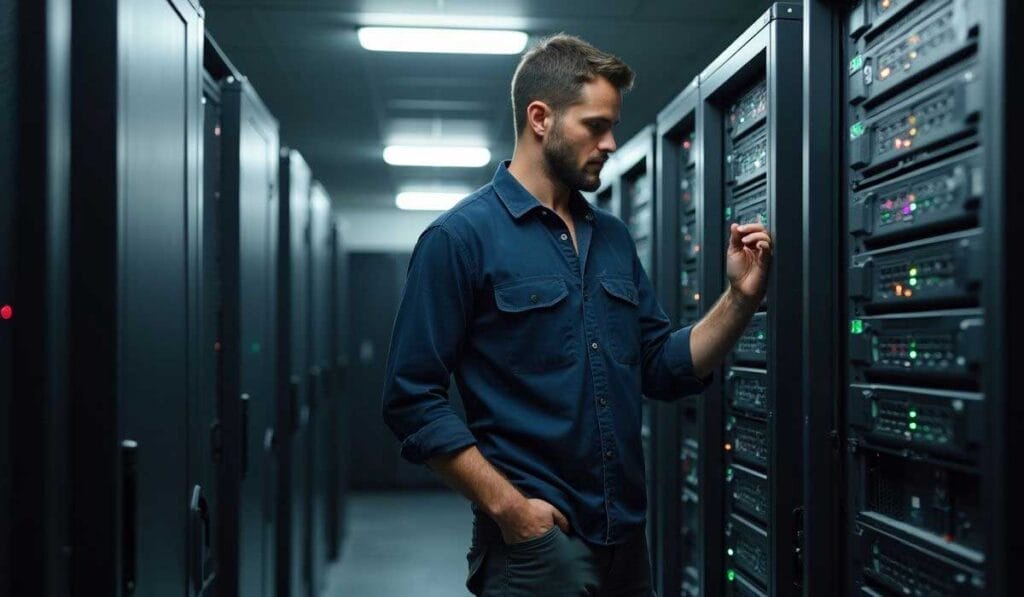
Meeting energy needs isn’t a walk in the park, with tight rules and supply hiccups shaping the landscape.
Keeping up with growing demand often feels like chasing shadows, as systems struggle to keep pace.
Supply chain constraints for power equipment
Shortages in critical components like transformers, circuit breakers, and power distribution units (PDUs) can delay projects.
High demand for data centers and aging grid infrastructure strain manufacturers.
You may face months-long lead times for equipment.
This can disrupt schedules and increase costs.
Global raw material shortages also play a role.
Copper, steel, and semiconductors are in limited supply but essential to production.
Shipping delays further complicate matters. Plan ahead by ordering early or considering alternative suppliers to keep your projects on track.
Regulatory and environmental considerations
Local laws shape how you design and power data centers.
You must meet federal energy codes, such as those by the Federal Energy Regulatory Commission (FERC).
These affect grid connections, electricity demand, and compliance rules.
Skipping these steps can lead to fines or penalties.
Environmental factors also carry weight.
Many areas push for carbon-free energy like geothermal or nuclear power.
Renewable integration isn’t just good PR, it lowers reliance on fossil fuels while meeting strict emissions targets.
Balancing clean energy goals with your project timelines takes careful planning but keeps operations future-ready.
Conclusion

Power keeps data centers alive.
With rising demand, understanding electrical systems is no longer optional.
You need to stay sharp on trends like renewable energy and energy-efficient designs.
The market grows fast, offering big chances for skilled workers and investors alike. Stay ahead or risk falling behind in this high-stakes game.
FAQs
1. What are the primary electrical needs for data centers?
Data centers require reliable power generation, energy efficiency, and robust backup systems like uninterruptible power supplies (UPS) and generators to handle electricity demand.
2. Why is renewable energy important for data centers?
Renewable energy sources like geothermal or carbon-free nuclear power help reduce environmental impact while supporting growing electrification needs in hyperscale data centers.
3. How do single-phase and three-phase power differ in data center applications?
Single-phase power is simpler but less efficient, often used for smaller loads. Three-phase power supports larger systems like cooling units and high-capacity servers due to its balanced distribution of electricity.
4. What role does N+1 redundancy play in a data center’s reliability?
N+1 redundancy ensures that critical components like PDUs or backups have at least one spare unit available to prevent downtime during maintenance or failure.
5. How do cloud service providers manage rising electricity demands?
Cloud migration drives higher electricity usage, so providers optimize with advanced cooling systems, smarter lighting setups, and investments in technologies such as small modular reactors (SMRs).
6. Why is Northern Virginia significant in the world of data centers?
Northern Virginia hosts many hyperscale facilities due to its strong infrastructure, proximity to the PJM Interconnection grid, and access to economic growth opportunities tied to AI-driven industries needing massive storage solutions.
